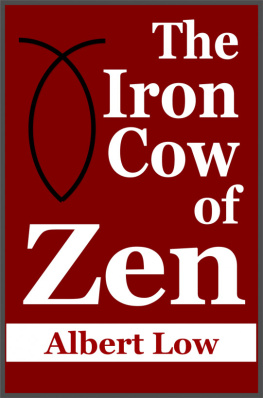Racism
Racism
ALBERT MEMMI
FOREWORD BY
KWAME ANTHONY APPIAH
TRANSLATED AND
WITH AN INTRODUCTION
BY STEVE MARTINOT
Copyright 2000 by the Regents of the University of Minnesota
First published in France as Le Racisme , copyright Editions Gallimard 1982; revised edition published in 1994.
An Attempt at a Definition, by Albert Memmi, translated by Eleanor Levieux, is reprinted from Dominated Man , by Albert Memmi (New York: Orion Press, 1968), 18595, and was originally published in Le Nef 1920 (Paris, 1964); copyright Editions Gallimard, Paris, 1968. What Is Racism? by Albert Memmi, translated by Steve Martinot, was originally published in LEncyclopaedia Universalis (1972). The Relativity of Privilege, by Albert Memmi, translated by Howard Greenfield, is reprinted from The Colonizer and the Colonized , by Albert Memmi (Boston: Beacon Press, 1965), 1017; copyright 1967 by Albert Memmi and used by permission of Viking Penguin, a division of Penguin Putnam Inc. The Mythic Portrait of the Colonized, by Albert Memmi, translated by Howard Greenfield, is reprinted from The Colonizer and the Colonized , by Albert Memmi (Boston: Beacon Press, 1965), 7991; copyright 1967 by Albert Memmi and used by permission of Viking Penguin, a division of Penguin Putnam Inc.
All rights reserved. No part of this publication may be reproduced, stored in a retrieval system, or transmitted, in any form or by any means, electronic, mechanical, photocopying, recording, or otherwise, without the prior written permission of the publisher.
Published by the University of Minnesota Press
111 Third Avenue South, Suite 290
Minneapolis, MN 55401-2520
http://www.upress.umn.edu
Library of Congress Cataloging-in-Publication Data
Memmi, Albert.
[Racisme. English]
Racism / Albert Memmi ; foreword by Kwame Anthony
Appiah ; translated and with an introd. by Steve Martinot.
p. cm.
Includes bibliographical references.
ISBN 0-8166-3164-6 (hc.) ISBN 0-8166-3165-4 (pbk.)
1. Racism. 2. Discrimination.
HT1521.M4413 2000
305.8dc21 99-047227
Printed in the United States of America on acid-free paper
The University of Minnesota is an equal-opportunity educator and employer.
11 10 09 08 07 06 05 04 03 02 01 00 10 9 8 7 6 5 4 3 2 1
CONTENTS
Kwame Anthony Appiah
BY ALBERT MEMMI
Steve Martinot
FOREWORD
Kwame Anthony Appiah
Albert Memmi is best known in the English-speaking world for his powerful complementary portraits of The Colonizer and the Colonized , essays in a tradition in Francophone letters of which Jean-Paul Sartres Anti-Semite and Jew and Frantz Fanons Black Skin, White Masks are the most distinguished predecessors. In this tradition, a political problemanti-Semitism, racism, colonialismis explored in part through the sketching of a philosophical-psychological portrait of representative actors in the social drama; ideal types, if you will, of the Anti-Semite, the Jew, the Negro, the Colonizer. Like Sartre and Fanon, Memmi seeks to understand the processes by which the inhumanity of a political order is kept in place by ordinary people driven by intelligible, if unappealing, desires: he reveals the rationality of colonialism as a system, even as he displays its cruelties. In the course of developing his account of colonialism, Memmi had to come to grips with racism: as a Tunisian Jew, he had experienced a colonial system in which French, Arab, and Jew were central political categories, racially conceived. The analysis he first proposed (An Attempt at a Definition, reproduced here in Appendix A) was one in which racists assign a differential value to the members of racial groups, on the basis of real or imaginary differences between them, in order to rationalize the privileges of their own race or aggression against members of other races. This definition did not insist that the differences in question be biologicalindeed, in his discussion, he insisted that (real or imaginary) cultural differences would in some cases do the work that was done, in others, by (real or imaginary) biological ones.
The obvious objection to such an account is that it covers too wide a range of cases: it would make some British attitudes toward the French (and, equally, alas, some French attitudes toward the British!) racist, since there is no doubt that in each country there are people who believe in the cultural superiority of their own culture and in their entitlement to better treatment in view of that superiority. If every claim of privilege based on real or imaginary cultural differences is a form of racism, then racism seems to lose its specificity in the general morass of ethnocentrism and xenophobia.
So Memmi went on to propose a narrower account, which insisted that racism, in particular, was the use of biological differencesonce more real or imaginaryto ground (social or physical) hostility and assault. (This definition, What Is Racism?, is reprinted in Appendix B.) This definition also laid greater emphasis on the doctrinal basis of racist attitudes (their connection with biological theories of race, which he calls raciology) while still pointing to the more general range of phenomena encompassed in his earlier definition, which he now called ethnophobia.
Here, in this book, Memmi moves back from the narrow definition toward the broader one, in large measure because he wants to say that the scientific theoriesthe raciologyare just a pretext or an alibi. People do not treat others badly because they believe the raciological theory; they develop the raciology in order to rationalize their ethnophobia. And, Memmi argues, ethnophobia is only one instance of an even more general phenomenon, which he now calls heterophobia, which covers all forms of domination based on real or imaginary differences between groups: men and women, gays and straights, natives and immigrants, and so on.
It is his care in distinguishing these different ways of thinking about racism, and his placing of it within the wider realm of heterophobia, that is, in my view, the great contribution of Memmis book. This translation should be an especially welcome addition to the literature on racism in English, in part because careful attempts at definition are surprisingly rare. One of the great moral achievements of the postwar period is that racism has gradually come to be seen by more and more people as a pervasive feature of modern societies and as something to be condemned. This achievement is weakened, however, by the lack of a thoughtful consensus on the nature of the phenomenon. Memmis work is an important contribution to the development of that necessary understanding.
But more than this, Memmis project is not just the analysis of racism, not just a project of definition, but also an intervention in the politics of anti-racism, offering us not just a sense of what racism is but also some tools with which to combat it. His starting point here is the fact that heterophobia is the most widely shared attitude in the world. He urges us, first, to be conscious of racism, in ourselves as in others: disarming our own racism is, he says, the first step, the price to be paid in advance. Second, he urges that, just because heterophobia arises naturally through the psychosocial processes he has described, we must continually be educating people to resist it. And third, because racism has an institutional life, it requires an institutional (which is to say a political) response. In the work of self-criticism, and of anti-racist education and politics, Memmis work can be an important manual, a companion in what he calls the infinite task of the struggle against racism that is the condition of our collective social health.










